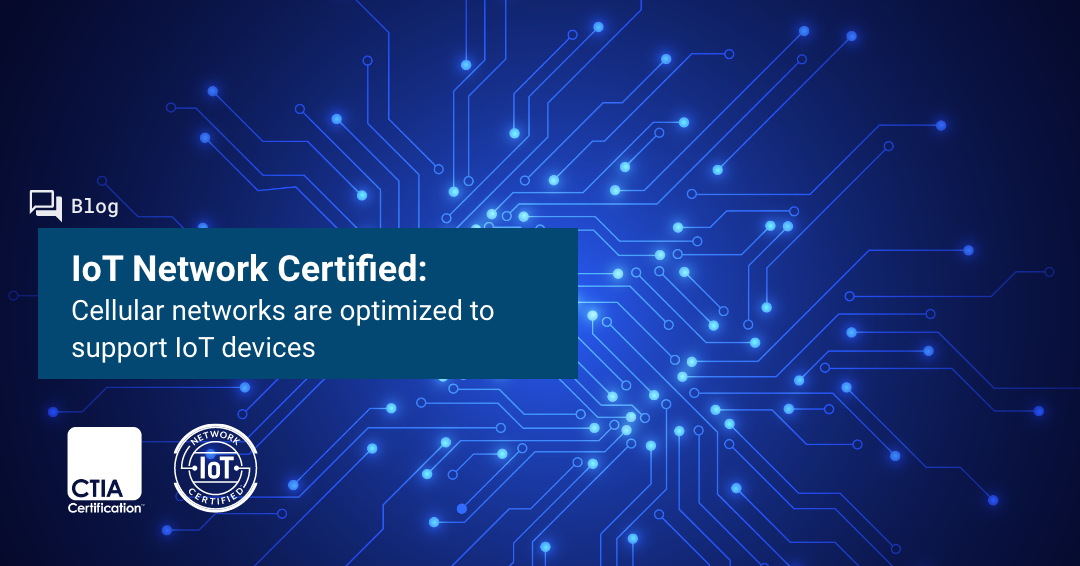By: Tom Sawanobori, Senior Vice President & Chief Technology Officer, CTIA

The latest 4G and 5G network-enabled IoT devices deliver powerful features unmatched by any other wireless technology. Thanks to the latest cellular technology, these devices benefit from networks that provide a blend of great coverage, capacity, responsiveness, mobility, reliability, and security. This means they help enable new use cases, ranging from smart cities and manufacturing to agriculture and healthcare.
In order to ensure seamless functionality, it is important that every cellular-connected device is supported by certified components that adhere to rigorous standards. The CTIA Certification™ IoT Network Certified™ program certifies that devices can connect to cellular networks and that they adhere to the latest network standards developed by international standards bodies—so innovators can focus on using IoT to improve consumers’ lives and revolutionize the way enterprises operate.
Cellular Networks are Optimized to Support IoT Devices
The sophistication inherent in today’s cellular networks means the wireless industry can customize network technology to provide capabilities needed for specific IoT use cases, driving increased innovation, efficiency, cost-savings, safety, and security.
In the 4G era, providers introduced Low-Power Wide-Area (LPWA) technology to offer better network coverage and longer battery life to IoT devices that were operating on networks originally designed for smartphones. With so many devices coming online in the 5G era, the industry is building on LPWA’s capabilities and designing network equipment and technology for different tiers of devices.
For non-critical, mid-tier devices like smart watches, industrial sensors, wearable medical devices, and video surveillance technologies, the wireless industry created 5G RedCap (short for “reduced capability”), which can coexist with 4G and is designed to offer the right combination of latency, battery life, and data throughput to best support this large segment of IoT devices. Additional network technologies exist to support other types of IoT devices.
Next-Generation Wireless Networks Enhance IoT Security
In today’s world, where millions of Internet of Things (IoT) devices are interconnected, network security is of utmost importance. Cellular networks have inherent safety features that make them the most secure wireless technology. For example, wireless networks employ end-to-end encryption, which uses complex algorithms to authenticate both ends of a connection and safeguards the data that flows through these networks.
5G networks are designed to provide advanced and focused security features. For example, network segmentation and slice isolation allow network operators to customize security and prevent cyberattacks from spreading across different parts of the 5G network. Additionally, wireless IoT features like improved user privacy protection, enhanced security while roaming, stringent physical and IT access controls, and customized security updates further protect IoT devices and their users.
IoT Network Certified Connects Our IoT Devices to the Highest Standards
Now more than ever, the wireless industry is building innovative security and network management features into the nation’s wireless networks. This ongoing innovation, along with cellular technology’s expansive coverage, mobility, and reliability, makes it the optimum platform for IoT devices.
CTIA Certification’s IoT Network Certified program certifies that devices can connect to 4G and 5G networks in adherence with the latest standards. To learn more about IoT Network Certified, visit https://iotnetworkcertified.com/.
A full overview of the IoT Network Certified program is available here.
